Causes of cervical caries, ways of treating the disease, photos of affected teeth
 The place where the tooth grows into the gum is called the tooth cervix.The name came from the site of localization of the disease.Cervical caries is the most serious and dangerous variety of tooth decay, because it affects the tooth in the most vulnerable place - at the base.If it is not treated, the disease deepens with the defeat of all the canal channels, which inevitably leads to its loss.This type of caries is mainly observed in people older than thirty years.
The place where the tooth grows into the gum is called the tooth cervix.The name came from the site of localization of the disease.Cervical caries is the most serious and dangerous variety of tooth decay, because it affects the tooth in the most vulnerable place - at the base.If it is not treated, the disease deepens with the defeat of all the canal channels, which inevitably leads to its loss.This type of caries is mainly observed in people older than thirty years.
Cervical caries
Reasons for the appearance of
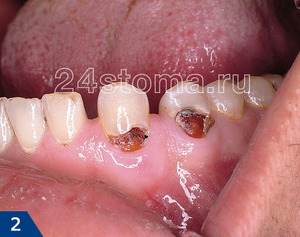 The causes are cariogenic bacteria that live in plaque and stone.Microorganisms process the remains of food, turning them into organic acids that spoil the enamel of teeth, washing out calcium from it.Change its composition and become pathogenic, thereby causing the disease, microorganisms can with poor oral care and on the basis of anatomical features of the enamel of the neck of the teeth.Some patients have a predisposition to gum exfoliation.Because this zone is poorly cleaned of food debris, a large number of pathogenic microorganisms are formed in the pockets of the gums, which cause cervical caries.
The causes are cariogenic bacteria that live in plaque and stone.Microorganisms process the remains of food, turning them into organic acids that spoil the enamel of teeth, washing out calcium from it.Change its composition and become pathogenic, thereby causing the disease, microorganisms can with poor oral care and on the basis of anatomical features of the enamel of the neck of the teeth.Some patients have a predisposition to gum exfoliation.Because this zone is poorly cleaned of food debris, a large number of pathogenic microorganisms are formed in the pockets of the gums, which cause cervical caries.
Therefore, the reasons are as follows:
- insufficient hygienic care;
- anatomical predisposition.
Mechanical damage to the tooth enamel can also contribute to the development of tooth decay, can damage it with abrasive toothpastes and tooth powders , which damages the enamel and opens the way for pathogens.In this place, the enamel is the thinnest and needs constant care and attention.
Cervical caries can spread with frequent use of acidic products or drugs that make the enamel porous.The first sign that the enamel is thinned and needs care is the reaction of teeth to sour and cold.This factor increases the risk of the disease.
To strengthen and make denser enamel in the root zone, special preparations must be applied to the cervical region, these manipulations are performed by the dentist , but it is possible.
Symptoms of the disease
Symptoms of cervical caries are different, if detected, should immediately seek the qualified help of an specialist.They are similar to the symptoms of caries of any other part of the tooth.
Disease in some cases is found in the armchair when examining the dentist.The initial stage of cervical caries, its photo is shown below, is easily treated with remineralization, without the use of a drill.
If pain occurs when eating food, and when the doctor sees a dark spot on the examination, this stage already requires more thorough treatment.In this form of caries , pains of are always present and carious cavities are formed, as the enamel thinning takes place.
Also, the thin enamel reacts to different stimuli, for example, mechanical - during the cleaning of teeth there are painful sensations.
Diagnosis of the disease
Cervical caries is diagnosed well, as the affected areas are visible to the naked eye.The patient himself, looking in the mirror, can easily find in his white petioles at the base of the tooth.But, sometimes doctors use special solutions of for accurate diagnosis and ask the patient to rinse their mouth.
These dyes fall only in demineralized porous enamel, and can not penetrate into healthy, calcium-coated.The examinee rinses his mouth with clean water and immediately shows where the paint was delayed.After a few hours, this color disappears.Cervical caries or sphenoid defect?
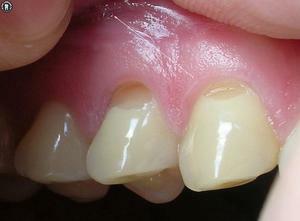 Another widespread dental disease is a wedge-shaped defect.It appears from the outside of the tooth as a V-shaped flaw.This "wedge" is directed up or down toward the jaw.Most often suffer from teeth, which are experiencing a maximum load when chewing - canines and premolars.Many patients confuse a wedge-shaped defect with cervical caries, as their location is the same, and require treatment of the corresponding caries.
Another widespread dental disease is a wedge-shaped defect.It appears from the outside of the tooth as a V-shaped flaw.This "wedge" is directed up or down toward the jaw.Most often suffer from teeth, which are experiencing a maximum load when chewing - canines and premolars.Many patients confuse a wedge-shaped defect with cervical caries, as their location is the same, and require treatment of the corresponding caries.
But this can not be done, because there are differences between these diseases.
- In the case of a wedge-shaped defect, the color of the tooth enamel remains the same, and the damaged V-shape remains dense and polished.
- Cervical caries has a loose, rough structure, brown color and irregular shape.
- The wedge-shaped defect has a long period of development, and the caries can be destroyed by the cervical caries in a short period of time in a few months.





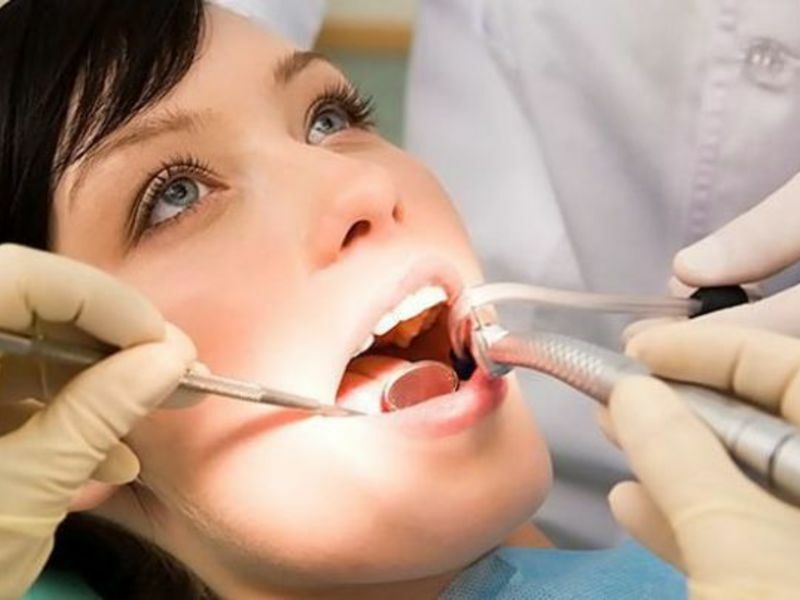

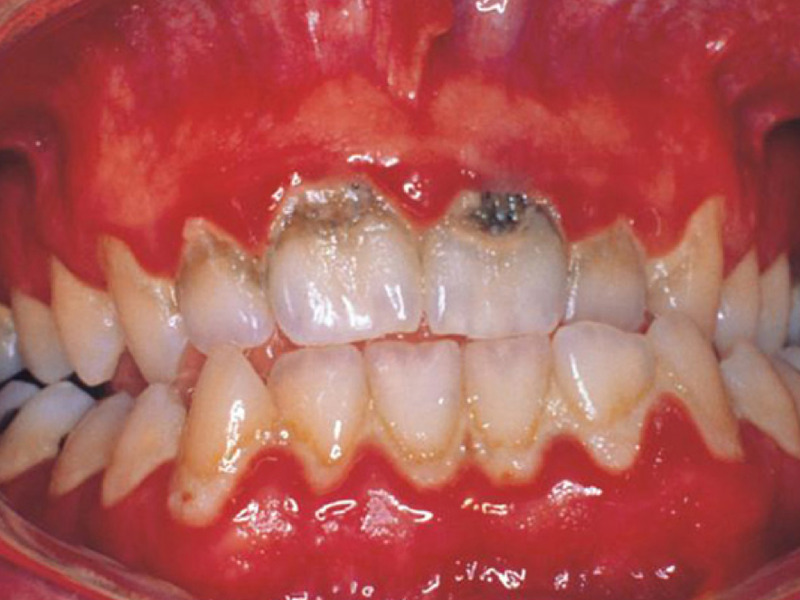
How is cervical caries treated?
Modern treatment of a cervical caries is similar to the treatment of any other part of the tooth and should be reduced to a series of medical manipulations that the dentist must necessarily perform.However, can not start treatment without proper diagnosis of to identify the stage of the disease.
Cervical spine stages
As you know, the disease is divided into four stages.
- In the first stage of the disease in the pridezennoy zone, the enamel changes color, becoming dark.
- During the second stage a shallow rough spot is formed.
- The third stage is characterized by the appearance of "hollow", with even more noticeable affected areas.
- At the fourth stage, the channels are affected.
Treatment of cervical caries in the initial stage, at which only a speck is visible, and the enamel is not severely damaged, reduces to applications with preparations aimed at compaction of enamel in this area.
But in order to finally get rid of the color change in this damaged area, you must choose one of the options described below.
The first option.
In the first version, the doctor applies a bleaching or etching gel to the damaged area of , which discolours pigments.But because of these manipulations, the tissue becomes even thinner and permeable to both the colorants and the tooth.Then the dentist continues the treatment and applies a special composition to the cervical area of the tooth to strengthen and reduce the permeability of the enamel.
If attempts to discolour the enamel did not result effectively and the color remained the same, it means only that the caries lasted a long time and had already painted deeper layers of enamel.In this case, the dentist should resort to the second treatment option.
The second version
The dentist begins to thoroughly polish the colored enamel with different polishes, then applies the medicinal composition, saturating the enamel.
If tooth decay, having become deeper, has already affected dentin, then such treatment will no longer give the effect of , as it is porous and requires a deeper color for it.In this case, the treatment of cervical caries is carried out by traditional methods.The dentist carefully removes all damage and restores the tooth structure with filling materials.
Features of treatment
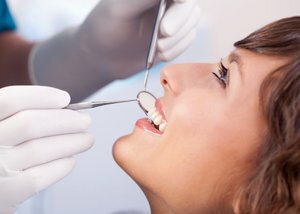 In this disease caries is in the closest proximity to the gum, which interferes with treatment, significantly complicates it and delays the recovery process.In the cervical area it is rather difficult to keep the working field in dryness for reliable treatment.In case of moisture ingress, has a high probability of poor fastening of the seal , because of what it can fall out and the doctor is forced to carry out the procedure anew.
In this disease caries is in the closest proximity to the gum, which interferes with treatment, significantly complicates it and delays the recovery process.In the cervical area it is rather difficult to keep the working field in dryness for reliable treatment.In case of moisture ingress, has a high probability of poor fastening of the seal , because of what it can fall out and the doctor is forced to carry out the procedure anew.
Another method of treating
There is another way to treat this ailment is to accurately reproduce the contour and the volume of the tooth.The seals at it are rather thin, and if poor quality material is used, then the risk of its fallout is great, which can lead to repeated caries.
It is important to remember that when caries is detected, you should immediately call your doctor and, the earlier you start the treatment, the more effective it will be.Caring for your teeth, you contribute for many years to come.



